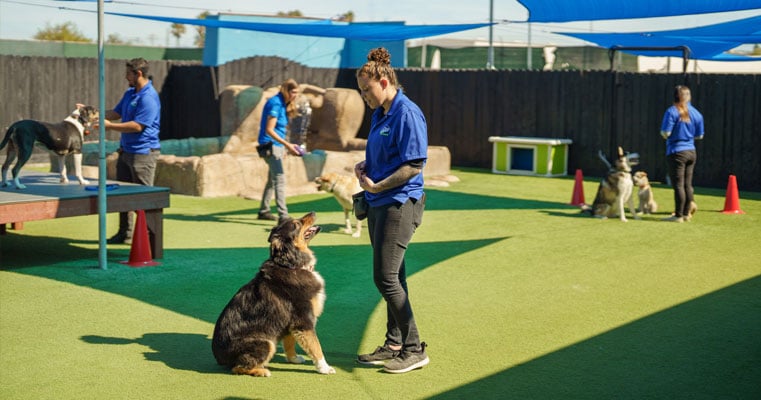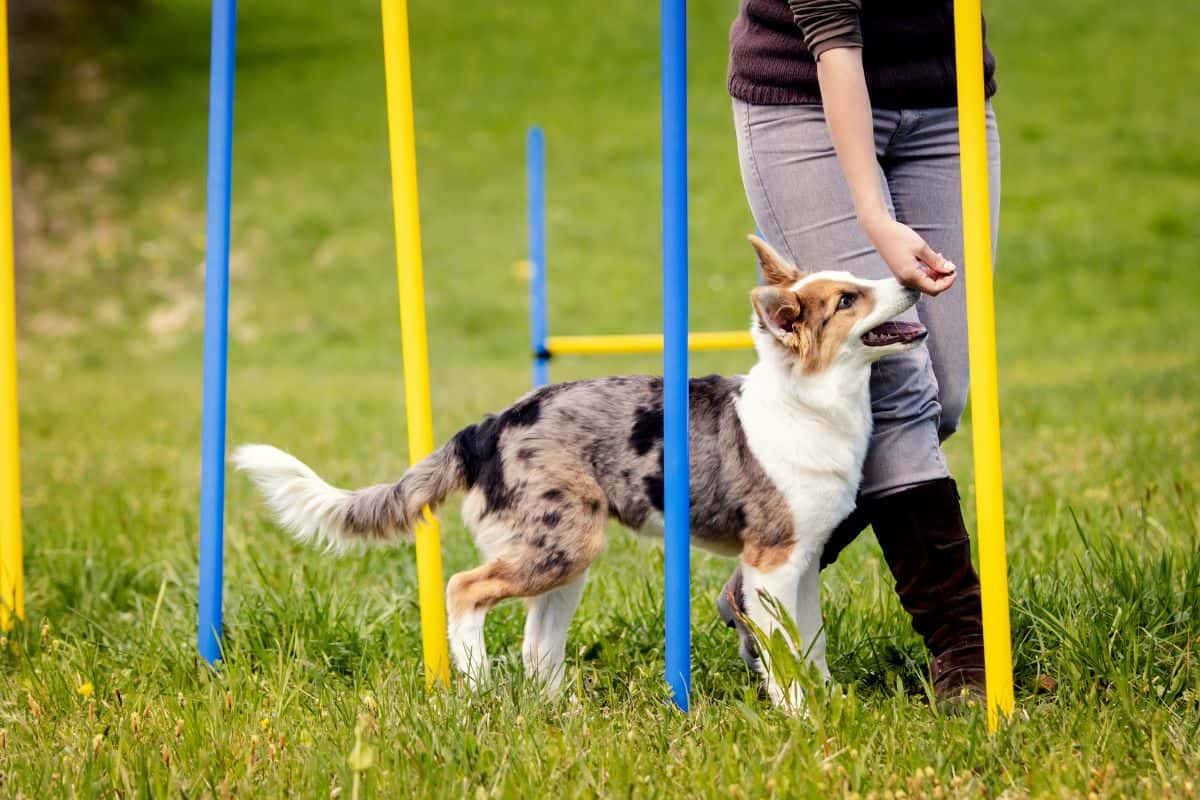Discover the Top Mistakes to Avoid in Dog Training
Discover the Top Mistakes to Avoid in Dog Training
Blog Article
Important Tips for Effective Dog Training: An Overview for Pet Dog Owners
Efficient canine training is a multifaceted procedure that needs a tactical approach tailored to both the animal's temperament and the proprietor's objectives. Comprehending how to browse these obstacles can dramatically improve the training experience, inevitably transforming the partnership between proprietor and canine.
Recognizing Dog Actions
Understanding pet dog actions is necessary for reliable training and fostering a harmonious connection in between pooches and their proprietors. dog training. Canines interact largely through body language, articulations, and activities, making it essential for owners to translate these signals properly.

Socializing plays a considerable function in canine habits; exposure to numerous settings, individuals, and various other animals can substantially influence a pet dog's character. Aspects such as breed characteristics and specific character should lead training techniques, as some breeds might have certain behavioral attributes that demand customized methods. By understanding these elements, proprietors can produce an encouraging environment that encourages favorable actions, resulting in effective training results and a much deeper bond with their family pets.
Developing Constant Commands
Effective interaction with your canine starts with establishing regular commands. This foundational aspect of training is vital for fostering understanding in between you and your pet. Uniformity in the commands you use makes sure that your dog can dependably associate certain words or phrases with the preferred behaviors.
When choosing commands, pick clear, unique words that are very easy to say and separate from each other. Prevent making use of similar-sounding commands that may perplex your dog. Using "rest" and "remain" is proper, however "sit" and "hit" can lead to misunderstandings.
In addition, maintain the exact same tone and quantity for every command. Dogs are delicate to vocal signs, so varying your tone can develop complication.
It is just as crucial to make sure that all family members get on the very same page concerning the commands used. A united front in command use will certainly avoid mixed signals and reinforce the learning procedure.
Favorable Reinforcement Techniques
The power of positive support in pet training hinges on its capability to motivate desired habits through rewards and praise. This technique is grounded in the principle that behaviors adhered to by positive outcomes are most likely to be repeated. By incorporating positive support right into your training program, you can efficiently shape your pet's behavior in a positive way.
To implement favorable reinforcement, it's important to determine what motivates your pet dog, whether it be treats, playthings, or verbal appreciation. When your canine performs a preferred activity, such as sitting on command, quickly award them with a treat or love. This association in between the command and the positive end result enhances their understanding.
It's vital to timing the incentives properly; delivering the reinforcement within seconds of the desired actions aids your dog make the connection (dog training). Additionally, uniformity is vital-- guarantee that all relative use the same commands and benefit systems to stay clear of complication

Progressively, you can reduce the frequency of deals with as your pet learns the actions, transitioning to praise or intermittent benefits. This technique not just cultivates a solid bond in between you and your dog but also promotes a positive discovering atmosphere, making educating an enjoyable experience for both.
Socialization and Interaction
Regularly exposing your canine to a range of atmospheres, individuals, and various other pets is crucial for their social development. Socialization should start early, preferably throughout the essential home window of 3 to 14 weeks, when pups are most responsive to brand-new experiences. Nevertheless, older canines can likewise gain read the full info here from ongoing socialization initiatives.
Introduce your dog to various setups, such as parks, pet-friendly shops, and city areas. This direct exposure helps them adapt to numerous stimulations, reducing anxiety and anxiety responses. Encourage positive communications with various other pet dogs and people, guaranteeing that these encounters are regulated and risk-free to promote self-confidence.
Make use of organized playdates with well-mannered canines, as this can boost your canine's social skills and instruct them suitable actions. Obedience classes and training sessions also offer excellent chances for socializing, enabling your dog to get redirected here connect with others in a monitored atmosphere.
Display your dog's body movement during communications, as this will assist you evaluate their comfort degree. Slowly increase exposure to more tough scenarios while ensuring that each experience declares. A well-socialized pet dog is more probable to exhibit well balanced behavior, making them a pleasure to have in any kind of setting.
Resolving Usual Training Obstacles
Every pet owner will certainly come across training difficulties eventually, no matter their dog's age or socializing degree. Determining common concerns such as stubbornness, disturbances, and fearfulness can assist in developing effective methods for renovation.

Distractions during training sessions can hinder emphasis. To battle this, begin training in a peaceful setting with minimal stimulations. Gradually present diversions as the pet becomes extra skillful in commands. Short, frequent training sessions are additionally reliable in maintaining attention.
Terror can impede a dog's discovering process. Progressive desensitization to the resource of fear, combined with favorable reinforcement, can help minimize stress and anxiety. Patience is crucial; never force a canine right into a scenario that triggers distress, as this may aggravate the issue.
Ultimately, understanding and attending to these common difficulties with a structured method will cultivate a more efficient training experience, reinforcing the bond in between pet dog and proprietor while advertising effective knowing.
Verdict
In summary, effective canine training relies upon a detailed understanding of canine actions, the facility of consistent commands, and the application of favorable support strategies. Socialization plays an important function in establishing well-adjusted animals, while resolving common training challenges requires perseverance and adaptability. By applying these essential strategies, pet owners can cultivate a strong bond with their canines and promote desirable actions, ultimately resulting in an unified relationship in between people a fantastic read and their canine friends.
Recognizing canine behavior is necessary for efficient training and promoting a harmonious relationship in between dogs and their owners.Socializing plays a substantial function in pet dog habits; direct exposure to numerous settings, individuals, and various other pets can considerably influence a pet's character.The power of favorable reinforcement in pet training exists in its ability to urge wanted behaviors via incentives and praise. By including favorable support right into your training program, you can efficiently form your dog's behavior in a positive way.
In recap, effective dog training depends on an extensive understanding of canine actions, the facility of regular commands, and the application of favorable reinforcement methods.
Report this page